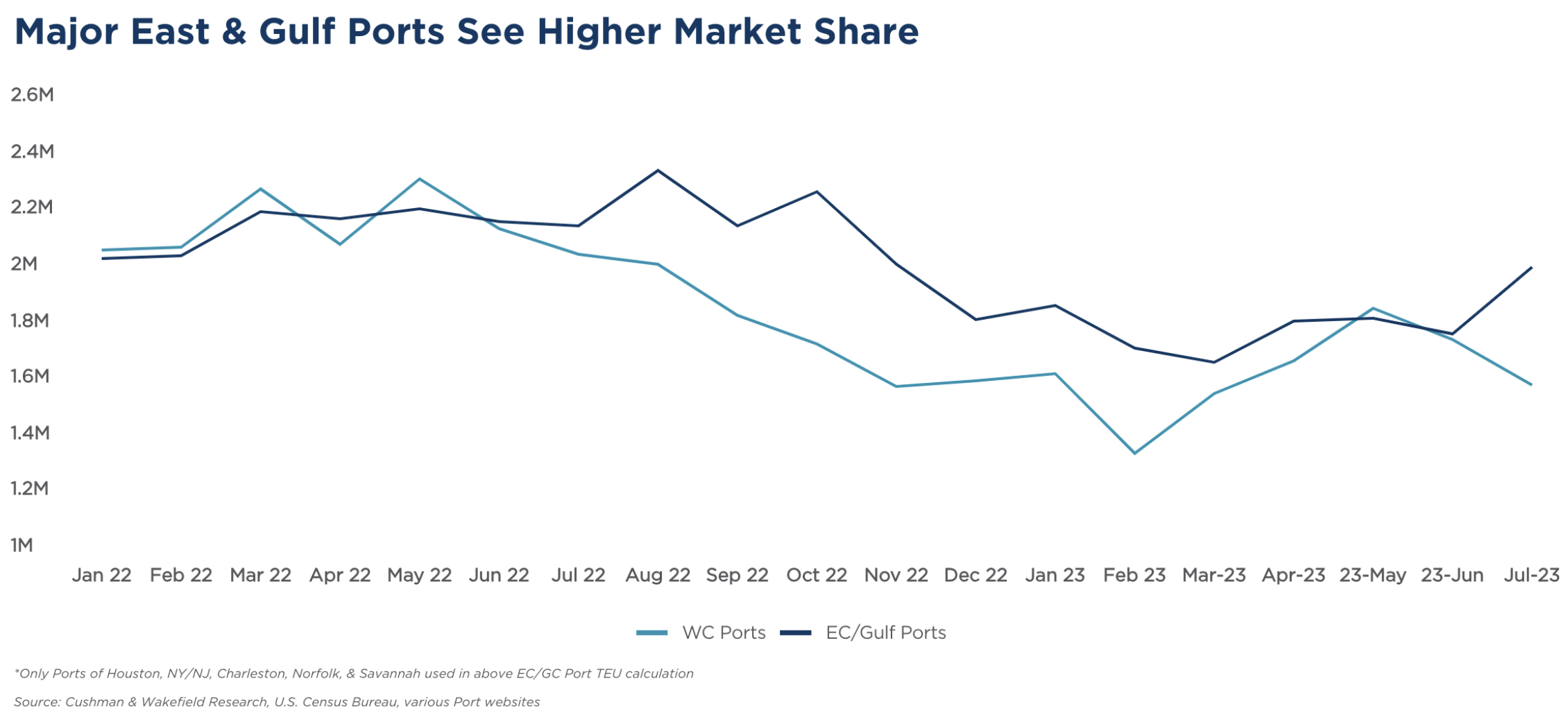Worldwide Impacts on Marine Shipping – Q4 2023
We discussed reshoring and nearshoring trends a bit in the last Value Focus Transportation and Logistics newsletter. There’s been some developments on that front, especially as it relates to the ongoing battle between East Coast and West Coast ports.
As we mentioned last time, a variety of pandemic-related and regulatory issues resulted in long delays at California ports, the traditional import location for the majority of goods from East Asia. Many carriers shifted their import handling to East Coast ports – with the port of Savannah being one of the biggest winners. Georgia has posted three straight record–setting years for exports. A study by Cushman Wakefield that ran through October 2023 shows that volumes at East Gulf Ports exceeded West Coast volumes for the majority of 2022 and 2023. However, early results indicate the West Coast ports grew faster than East Coast ports in November and December 2023, and there are a couple of reasons behind that.

(click here to expand the image above)
The El Niño weather event has hit the Panama Canal hard. Under normal conditions, between 36 and 38 ships per day will make the transit. Due to the worst drought Panama has experienced in over 70 years, the Canal Authority began reducing the number of ships passing through on a daily basis in July 2023. In February 2024, the Canal Authority reduced the total number of ships to 18 per day.
Meanwhile, approaching from the other direction has been made harder by attacks on vessels in the Red Sea. About one-fifth of freight reaching East Cost ports travels through the Red Sea and the Suez Canal. Shippers continuing to use the Suez canal route will face higher insurance charges, while shippers opting to go around the Cape of Good Hope can expect to add at least a week to transit times. More recently, the first fully sunk ship from the conflict also disrupted underwater data cables. So far, analysts have had mixed opinions on the overall impact that will arise from the Houthi attacks.
Between Red Sea disruptions and climate issues in Latin America the impact of worldwide current events on marine logistics cannot be ignored.


